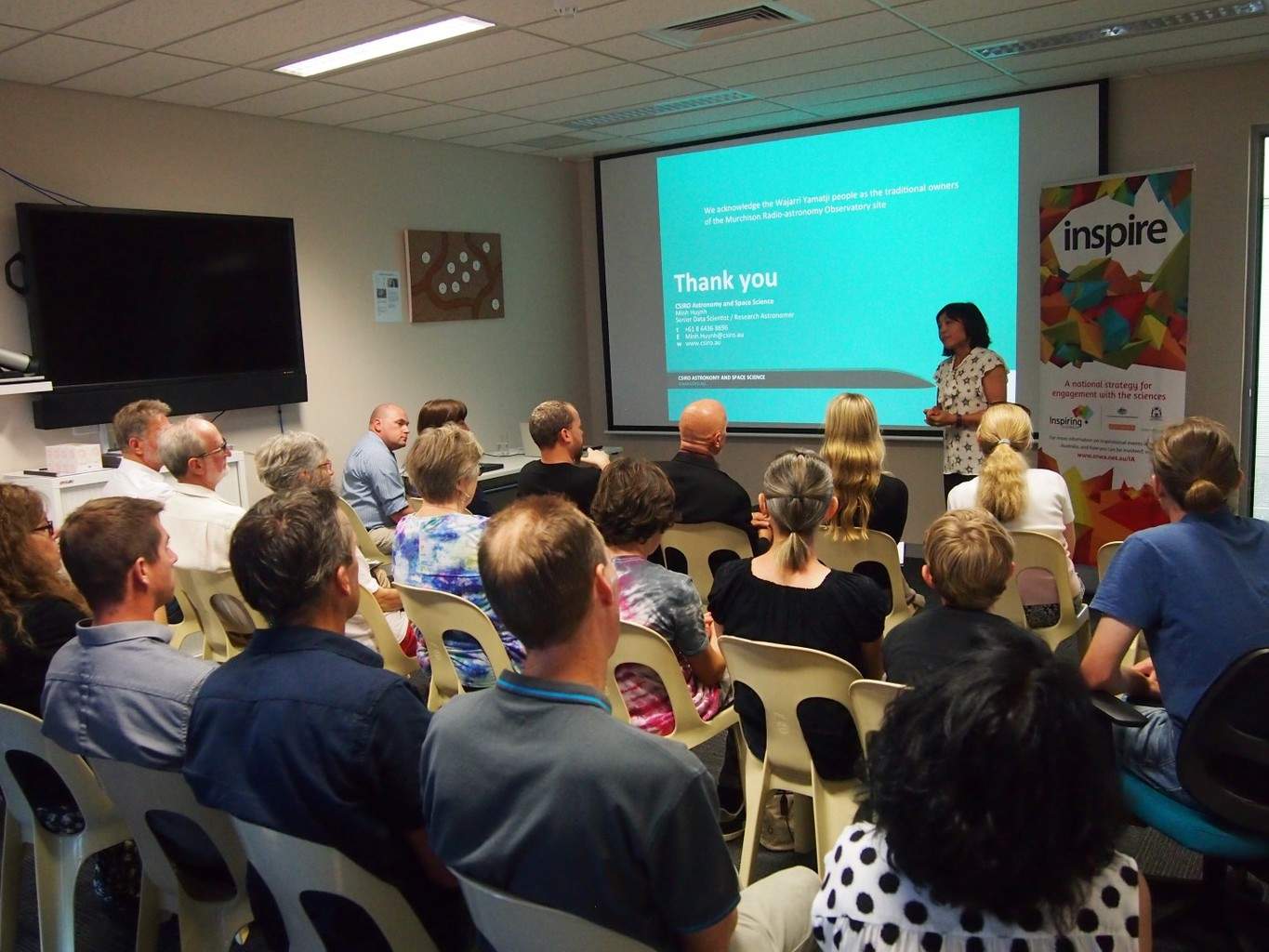A group of science-lovers got a first-hand insight into how the Murchison Radio-astronomy
Observatory (MRO) is unlocking the secrets of our night skies thanks to a CSIRO Astronomy
and Space Science (CASS) and Scinapse presentation on Wednesday.
Kevin Ferguson, the Head of WA Observatory Operations at CSIRO revealed the insider
information behind the MRO and the engineering capability that resides in the Murchison. The
Murchison site is home to the Australian Square Kilometre Array Pathfinder (ASKAP), which is
an array of 36 12m antenna, and the Murchison Widefield Array (MWA).
Chosen for its extremely low radio frequency interference (RFI), the Murchison site is
implementing a green energy policy. Incorporating over 5000 photovoltaic panels into its hybrid
power station and a geo-thermal heat exchange system. This infrastructure will support the
collection of approximately 4.9 zettabytes (1 000 000 000 000 000 000 000 Bytes, or 10) of
raw data output per year.
Dr Minh Huynh, CASS Senior Data Scientist and Research Astronomer, presented on how this
information was going to be used to answer big questions such as the formation of galaxies and
black holes in their centre, the sources of first light in the Universe, and gravitational waves.
“It was great to speak to a full house. Everyone was so engaged and interested in what was
happening at the Murchison Radio Observatory, and I think that goes to show how astronomy
inspires and fascinates many people. I really enjoyed talking to everyone,” Dr Minh Huynh said.
Reflecting on the evening, Kevin Ferguson said “The level of interest and engagement in STEM
was evident with the number of Scinapse members in attendance and the variety of questions
offered throughout the presentations.”
Scinapse chair Emma Jackson said the evening provided an excellent insight into these world-
class projects.
“People know the SKA is a seriously big deal for the region, but few people know specifically
what is happening out at the site and what research questions the infrastructure is helping to
answer,” Ms Jackson said.
“CSIRO provided a great opportunity to learn about this cutting edge technology and how it will
help us to reveal the structure of the early Universe, chart the evolution of galaxies, and decode
flickering sources of radio waves in our Galaxy and beyond.”
Talk participant Rob Smallwood said it was an incredible night.
“To learn about interferometry, black holes, accretion disks, gravity waves, low frequency arrays,
general relativity, SETI, and more was a science geek’s STEM bonanza,” Mr Smallwood said.
Scinapse committee member and President of the Geraldton Astronomy Group, Ken Lawson
also appreciated the update on the MRO as it is now and what new developments are
happening with the ASKAP, MWA and the SKA.
“The really cool thing is the science that is being discovered all the time from the MRO with
papers coming out shedding light on those big questions and the questions coming up that we
didn’t even know,” Mr Lawson said.
“It was a brilliant, enlightening, thought provoking and inspirational evening thoroughly enjoyed
by all.”
To find out more about the ASKAP and MRA projects visit
http://www.ska.gov.au/Observatory/Pages/ASKAP-and-MWA.aspx.
Missed out on this event? Sign up to become a member of Scinapse (it’s free) to find out about
science events happening in the Mid West. scinapse.org.au
For more information please contact Emma Jackson on chair@scinapse.org.au

